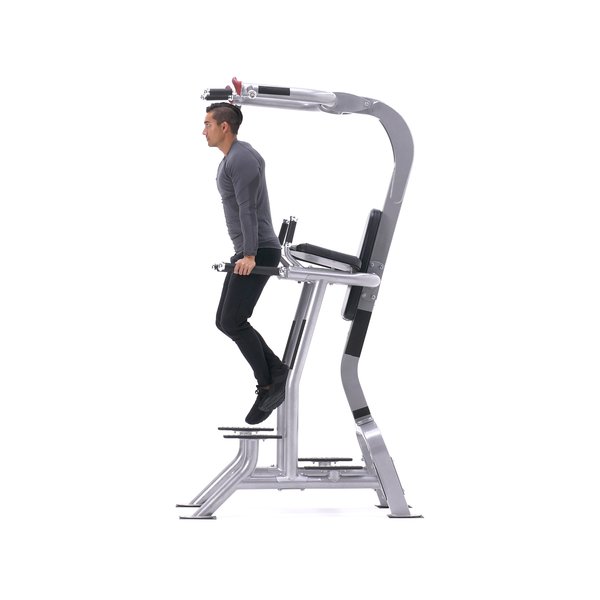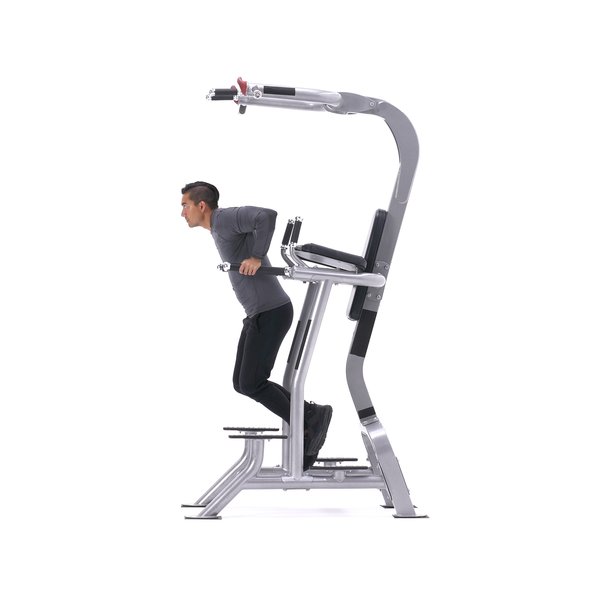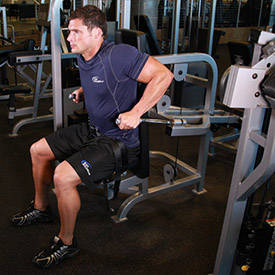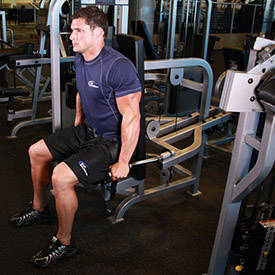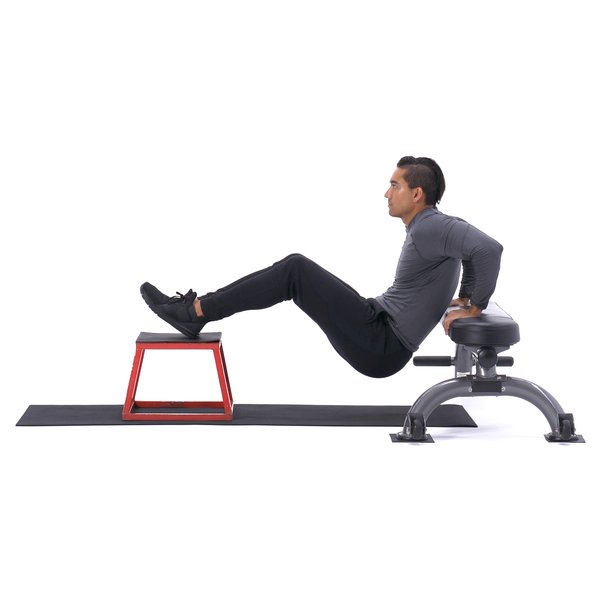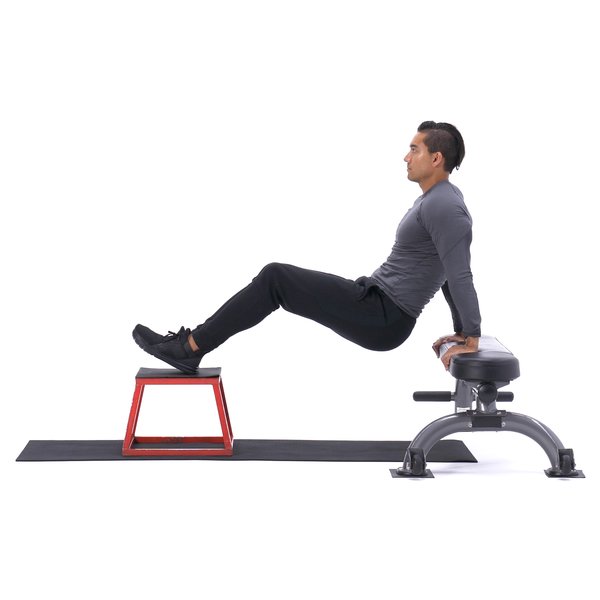Weighted bench dip Images


Weighted bench dip Instructions
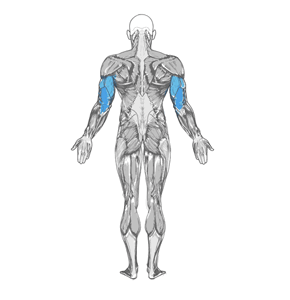
- For this exercise you will need to place a bench behind your back and another one in front of you. With the benches perpendicular to your body, hold on to one bench on its edge with the hands close to your body, separated at shoulder width. Your arms should be fully extended.
- The legs will be extended forward on top of the other bench. Your legs should be parallel to the floor while your torso is to be perpendicular to the floor. Have your partner place the dumbbell on your lap. Note: This exercise is best performed with a partner as placing the weight on your lap can be challenging and cause injury without assistance. This will be your starting position.
- Slowly lower your body as you inhale by bending at the elbows until you lower yourself far enough to where there is an angle slightly smaller than 90 degrees between the upper arm and the forearm. Tip: Keep the elbows as close as possible throughout the movement. Forearms should always be pointing down.
- Using your triceps to bring your torso up again, lift yourself back to the starting position while exhaling.
- Repeat for the recommended amount of repetitions.
Caution: By placing your legs on top of another flat bench in front of you, the exercise becomes more challenging. It is best to attempt this exercise without any weights at first in order to get used to the movements required for good form. If that variation also becomes easy, then you can have a partner place plates on top of your lap. Make sure that in this case the partner ensures that the weights stay there throughout the movement.


